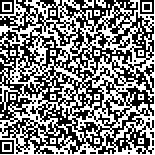下载中心
优秀审稿专家
优秀论文
相关链接
摘要

大气气溶胶具有气候环境和健康效应,且具有明显的时空和昼夜变化特征。因此探测夜间气溶胶光学厚度(AOD)具有重要的意义。NPP/VIIRS上的昼夜通道DNB(Day Night Band)为夜间反演AOD提供了有效的数据。基于大气辐射传输理论对夜间AOD进行反演,首先,利用“背景合成法”获取夜间城市灯光真实辐射值;然后,利用改进的“消光法”反演夜间AOD。选取华北地区作为研究对象,获得了2016-03—2017-02新月日期的夜间城市灯光真实值,选择其中的2016年7月和10月的2次污染天气过程,反演了夜间AOD分布。通过北京、天津和郑州的太阳光度计地基观测结果和北京市环境质量监测站空气质量指数(AQI)对反演结果进行验证,结果表明反演结果和观测结果有较好的一致性,展示了卫星微光数据在夜间城市污染空间分布监测中的应用潜力。
关键词:
夜间气溶胶 光学厚度 NPP VIIRS DNB 城市灯光 遥感反演Aerosol has an extensive impact on Earth’s climate and ecosystems and thus harmful to human health. The distribution of atmospheric aerosols has diurnal variation, and nighttime aerosol concentrations are higher than those during the day. Therefore, the accurate monitoring of AOD at night is significant but challenging. The Visible/Infrared Imager/Radiometer Suite (VIIRS) of Suomi National Polar-orbiting Partnership has a Day Night Band (DNB), which can observe the city light overnight. The artificial night light observed by the DNB of VIIRS reflects the extinction effect of the atmosphere and it is helpful in obtaining the nighttime AOD.To monitor the nighttime AOD, this study obtained the nighttime AOD on the basis of the theory of atmospheric radiation transmission. First, moonless and cloudless DNB data were selected, and the artificial lights during the crescent period were obtained by multi-day DNB data fusion. Second, the nighttime AOD was retrieved based on the extinction effect of aerosol on artificial lights. Finally, the obtained AOD is compared with the AOD from the CE318 and AQI indices from the environmental quality monitoring station to verify the feasibility of the retrieval method.This study focused on the nighttime AOD in North China from March 2016 to February 2017. The artificial lights of North China from four seasons were obtained, indicating that the major cities, especially the JingJinJi urban agglomeration, are very prominent in the artificial lights distribution map, and the traffic network between cities is clearly visible. Meanwhile, the nighttime AOD distribution during two heavily polluted weather processes in July and October 2016 was retrieved. The retrieval results indicate that the nighttime aerosols in North China are mainly distributed in the JingJinJi region and the provincial capital, which have developed industries and a dense population. Moreover, the retrieved and observed AODs are consistent, with an agreement index of up to 0.962, indicating that the retrieval study achieved good results.This study demonstrates the potential of satellite twilight data in monitoring the spatial distribution of urban pollution at night. The distribution characteristics of nighttime urban lights and aerosols are also provided, enriching the understanding of the temporal and spatial distribution of aerosols at night.

